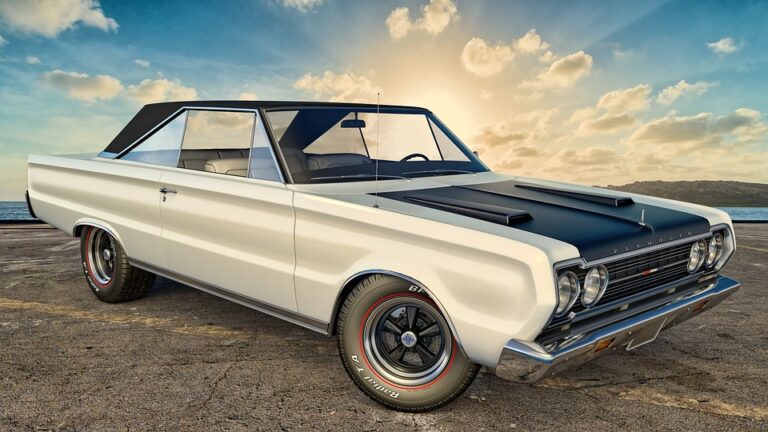Reviving the Classics: How to Restore Your Vintage Vehicle
The growing trend of restoring classic cars has captivated automotive enthusiasts across the globe. The charming allure of these vintage vehicles not only serves as a testament to engineering ingenuity but also offers a thrilling endeavor for those willing to dive into restoration projects. If you’re among those who dream of reviving a classic car, this guide will inspire and equip you with essential insights on how to restore your vintage vehicle effectively.
The Classic Car Resurgence
The classic car market is booming, with recent statistics indicating that the classic car sector in the United States alone experienced a 14% growth from 2021 to 2022. As millennials and Generation Z embrace the nostalgia associated with these vintage machines, this trend is expected to continue. Classic cars are not merely products of nostalgia; they offer an investment opportunity that has appreciated considerably over the past two decades, with some models increasing in value by over 300%.
Understanding the Restoration Process
Restoring a classic car involves several meticulous steps, each critical for achieving the desired outcome. Here’s a structured approach to guide you through the restoration process.
Assessment and Research
Before diving in, it’s crucial to assess the condition of the vehicle. Take note of its state, including areas needing extensive work, like rust, engine issues, or interior damage. Research your classic car model, including its systems and available parts, to determine the necessary steps for restoration.
Key Steps:
- Inspect for rust, dents, or structural damage.
- Assess the engine, transmission, and other mechanical components.
- Determine the availability of parts specific to your model.
Set a Budget
Restoring classic cars can become an expensive endeavor. It’s essential to create a budget that covers necessary expenses, including parts, materials, labor, and unforeseen repairs. A detailed budget can help you avoid overspending, which is common when passion for restoration takes over.
Create a Plan
Outline a comprehensive restoration plan that details each step you’ll undertake. This includes:
- Mechanical repairs,
- Bodywork,
- Interior restoration,
- Respray and finishing touches.
Example: If you’re restoring a 1965 Ford Mustang, your plan may include sourcing original seat covers and finding a certified mechanic familiar with vintage engines.
Sourcing Parts
Finding authentic parts can be one of the most challenging aspects of restoring classic cars. Many car owners opt for aftermarket parts, but for authenticity, there’s nothing like original parts. Vintage car shows, swap meets, and online marketplaces dedicated to classic cars can be valuable sources for parts.
Tips:
- Join local classic car clubs for networking opportunities.
- Use online platforms like Hemmings or AutoTrader Classics to find vendors.
The Hands-On Restoration
Once your plan is in place, the real fun begins. Whether you’re tackling the restoration yourself or hiring professionals, patience and precision are vital.
Mechanical Restoration
Begin with the engine, transmission, and braking systems. Servicing these components ensures the vehicle runs smoothly after restoration. Research current technologies to incorporate modern efficiencies that respect the authenticity of the classic car.
Body and Paint
Next comes bodywork. Sand down any rust, dent removal, and painting. For a flawless finish, choose quality paint that matches original colors or suits your vision for the car.
Interior Restoration
Lastly, refurbishing the interior breathes life into your vintage vehicle. Replace worn upholstery and carpets, and rejuvenate dashboards and controls.
Example of a Successful Restoration
A great example is the restoration of the Bugatti Type 57SC Atlantic, a car that is not only a piece of art but also a phenomenal engineering feat. When restored, these classic cars can fetch upwards of $40 million at auctions, illustrating the potential passion-driven projects can yield.
Final Touches: Documenting Your Journey
Document your restoration journey! Keeping a detailed record of the work performed, parts used, and modifications made adds value and credibility to your classic car. Create a scrapbook or digital file to store receipts, photographs, and notes about your project.
Celebrate Your Achievement
Once your classic car is restored, celebrate by taking it to car shows, participating in club events, or simply enjoying drives along scenic routes.
Conclusion
Restoring classic cars can lead to a fulfilling hobby while also successfully reviving automotive history. From planning and budgeting to hands-on restoration, each step of the journey presents unique challenges and rewards.
For more insightful articles on classic vehicles, check out "Top 10 Classic Cars to Invest In for the Future" and "A Beginner’s Guide to Classic Car Maintenance."
Resources:
By diving into this authentic pursuit, you don’t just restore a vehicle; you reclaim a piece of history. So grab your tools and get started on restoring your dream classic car today!


